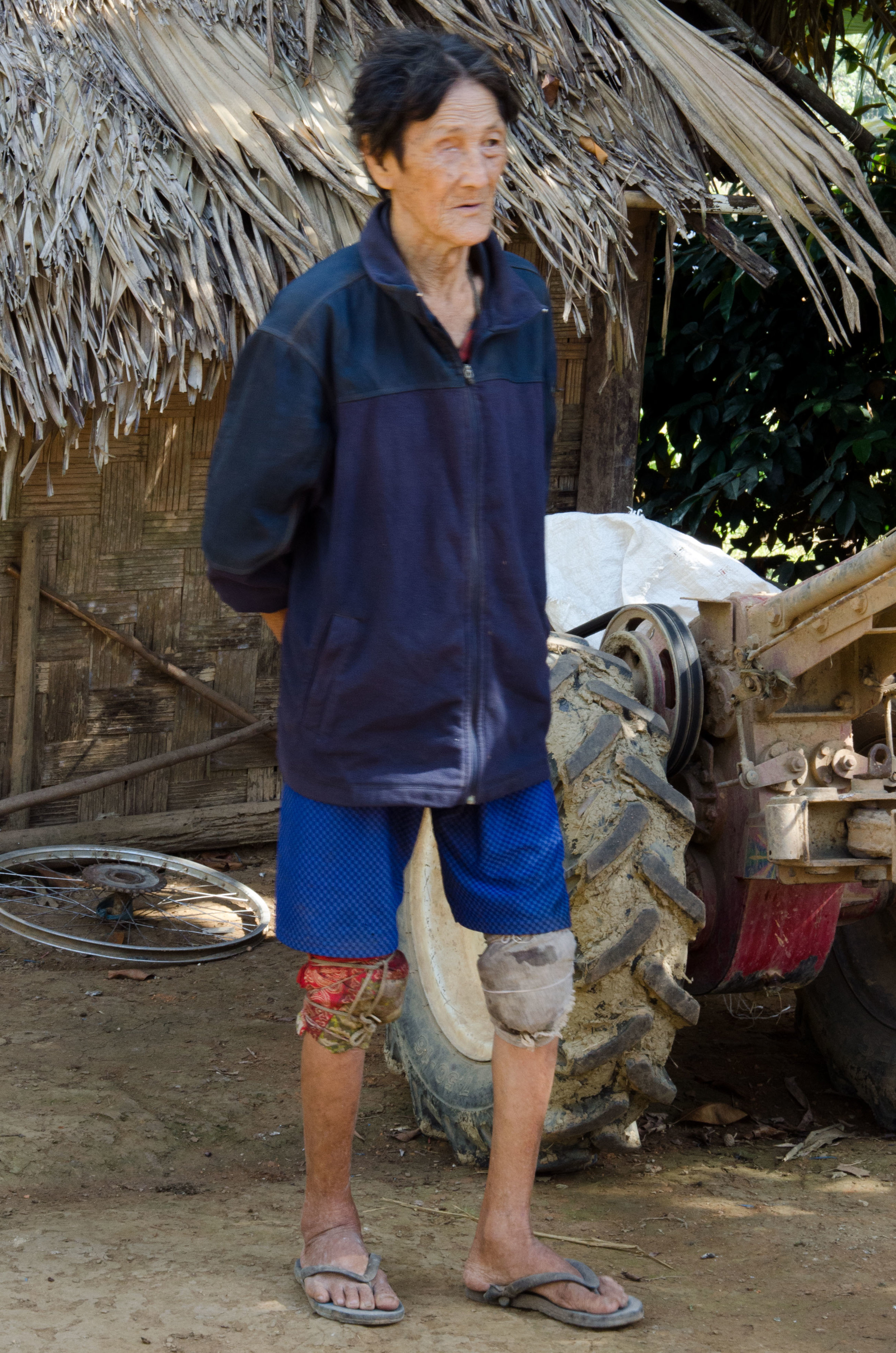The township of Vang Vieng on the banks of the Nan Song River is surrounded by majestic limestone karst peaks and there are at least seven extensive cave systems in the area.
First thing after breakfast we took a short mini-van ride to where a swing bridge across the Nan Song led us to a pathway up to the Tham Jang cave. We had a steep 197 step climb to the cave entrance and from this point the early morning view of the town was crystal clear and the mountains looked magnificent.
The cave was used as a bunker in the 19th century and again during the Lao Civil War. The pathway inside the cave was well lit and at this time of the year the cave was quite dry.
We followed the pathway for about 200 m and then reached a barrier preventing further passage. It was beyond this point where, sometime recently an Argentine tourist decided to explore with just a candle for lighting. Sadly, he got lost and died.
We emerged at a higher exit point giving a fantastic view over the valley below. On descent we walked around to see the spring that emerges from the mouth at the base of the cave. People can swim in this stream near the mouth and venture fifty metres upstream and inside the cave.
Outside the cave there were now a few stalls being set up to cater for tourists many of whom are South Koreans. One stall was selling cooked beeswax wrapped in banana leaf. The cooking was necessary as the cells were not filled with honey but larvae!
We then crossed over the Nan Song River’s rickety traffic suspension bridge in our mini-van and headed westwards towards Than Phu Kham. On the way we stopped at a Hmong village where we met some local people and our guide translated our questions and answers. The people live in very primitive earthen floor, bamboo huts with the only luxury being electricity for lighting. An elderly Hmong man told us he was 98 years old and his weathered face and bandaged knees hinted that he was telling the truth.
These Hmong who mainly live in the highland areas are not Buddhists but Spirit people having their own collection of deity who look after each facet of their lives. Their survival and well-being is based upon subsistence farming by growing rice, sweet potato and fruits and having chickens and one or two cattle as their main livestock.
We visited the local Hmong Primary School where there were three concrete classrooms with incredibly basic facilities but very enthusiastic children. The classes had fewer than twenty students in each of years one, two and three. The teachers were keen to show us their staffroom which had two electric fans plus lighting.
We continued along the road to Tham Phu Kham which is a place for adventure activities such as rock climbing, mountaineering, serious caving, go-karting, zip lining, giant tubing in the Nam Song and swimming in the Blue Lagoon.
The area was densely populated with excited North Koreans (and other Asians) many of whom donned life-jackets prior to jumping into the two metre deep lagoon. The supposedly azure coloured water did not look particularly inviting.
We stayed around for a short time but quickly decided that this was not our scene. We returned to our hotel and had a leisurely swim in the hotel’s pool which was much cleaner, clearer and probably far less polluted than the Blue Lagoon.
In the mid-afternoon the six of us hired three long boats and took a one hour trip up the river from our hotel. The cost was 100 000 kip per boat which translates into approximately AUD$15.
The boats use an inboard/outboard of the typical Asian whipper-snipper design with the propeller never more than a few centimetres below the water’s surface. As the river was quite shallow in parts and there were rapids to ascend, the propeller also had a protective rudder blade beneath so that if the unexpected happened this metal blade hit rocks rather than the prop.
There were a surprising number of hotels and expensive houses on the high river-banks above us and there were several small bamboo footbridges across the river too. At one corner we encountered a network of zip-lines across the river with people moving at considerable speed on overhead wires above us.
Coming down the river were kayakers and lots of people riding on large inner-tubes and as the river flow was in most parts very slow, it seemed that these so-called ‘tubers’ were getting nowhere unless they paddled.
Back at our hotel, we relaxed with cold drinks once again by the river-bank in the setting sun. At dinner we contemplated the day we’d experienced, especially the Hmong families and their way of life.
These people appear contented with their lot and live a simple life that has many advantages over the hectic pace and stress that is common in our western lives.
Our stay at Vang Vieng is coming to a close and in the morning we start our final leg of travel in Laos as we head further north to Luang Prabang.























